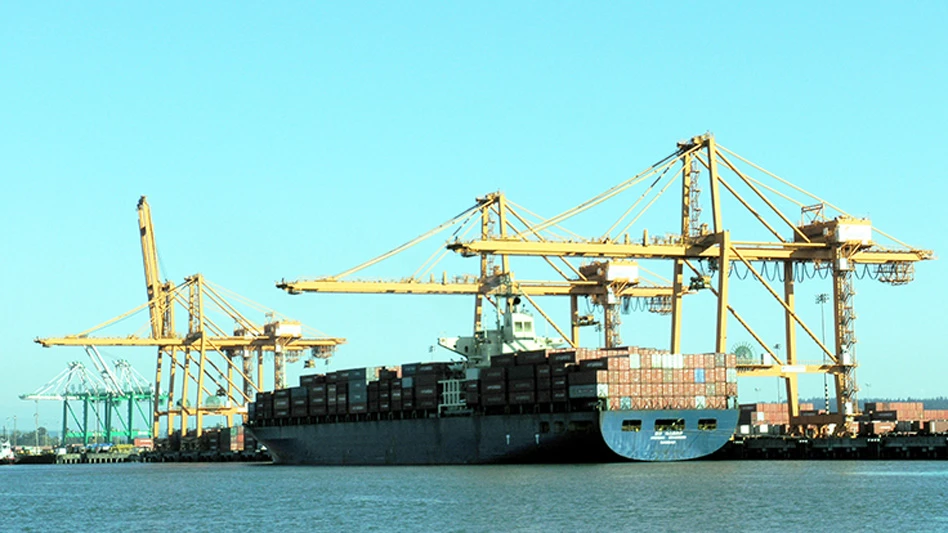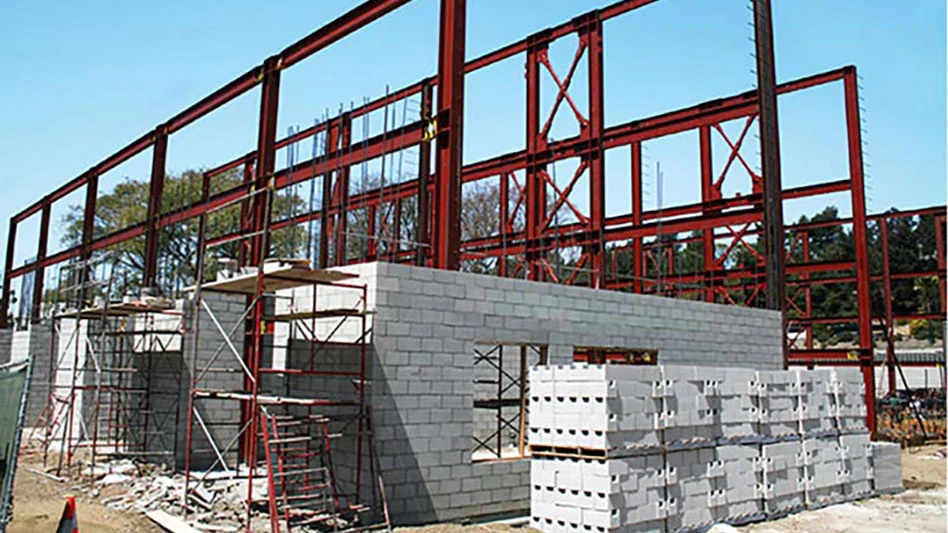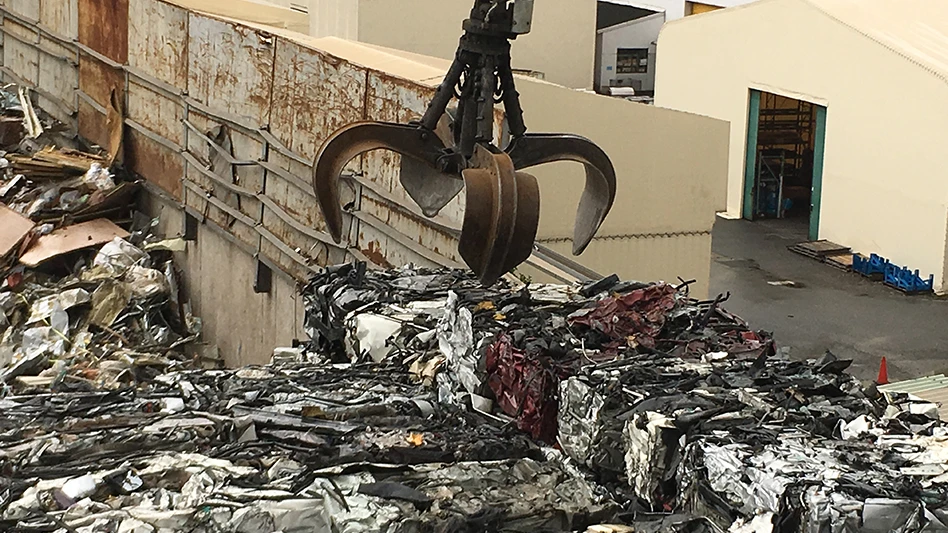 (Per gross ton for No. 2 shredded scrap, defined as .17 percent or greater copper content)Ferrous scrap buyers and sellers got a reprieve from what has become the trademark volatility of the market in the March buying period. Domestic mill buyers of ferrous scrap in the United States were able to make purchases in March at price levels remarkably consistent with those made the month before.
(Per gross ton for No. 2 shredded scrap, defined as .17 percent or greater copper content)Ferrous scrap buyers and sellers got a reprieve from what has become the trademark volatility of the market in the March buying period. Domestic mill buyers of ferrous scrap in the United States were able to make purchases in March at price levels remarkably consistent with those made the month before.
Per ton average pricing for all grades in all regions moved by just $8 or less from February to March, according to pricing survey data from the Raw Material Data Aggregation Service (RMDAS) that is compiled by Management Science Associates Inc. (MSA), Pittsburgh.
Small increases of from $1 to $8 per ton were most common for prompt industrial grades, shredded scrap and No. 1 heavy melting steel (HMS), with only two grades in two separate regions declining (by just $1 per ton in those cases).
Pricing for all grades across all regions stayed at $400 per ton or higher in the March 2011 buying period, which RMDAS closed out on the 20th day of the month.
No. 2 shredded scrap (shred with more than 0.17 copper content) maintained a national average price of $452 per ton on the spot market, an increase of just $1 per ton, as prices for the three grades covered in the RMDAS Index moved in fairly close sync across all three RMDAS regions (North Central/East, North Midwest and South).
Pricing moved the least in the North Midwest region (consisting of Illinois, Iowa, Kansas, Minnesota, Missouri, Nebraska, Wisconsin and the northwest corner of Indiana), where prompt grades and shredded scrap gained $4 in value, while No. 1 HMS was purchased for $1 per ton more, on average.
Many scrap recyclers are reporting a healthy flow of scrap coupled with enough demand to keep scrap flowing out of their yards as quickly as it comes in.
A scrap processor in the Midwest speculates that peddlers and scavengers continue to find scrap to bring in, though they may be travelling farther to find it. “I think people in 2004 got the lowest-hanging fruit—the scrap nearest to the highway,” says the recycler. “By 2008, they had to move some 5 miles beyond main highways, and now prices are staying good enough that we’re still drawing scrap from even farther away,” he comments. “It’s still there—it’s just people are going further out to get it.”
Industrial production figures are not soaring but also are not reversing, causing at least some clean production scrap to come in each month.
At the National Demolition Association convention in Las Vegas in March, a panel of demo contractors reported varying business conditions, with several saying their volume of work has increased since the darkest days just after the banking industry nearly collapsed.
“There seems to be a lot going on right now; we have work on the books,” said Mike Casbon of ERM Inc., who is working on a major project in Texas for the global demolition and environmental remediation company.
Tom Robinette of Chicago-based Robinette Demolition Inc. said the Chicago area was “seeing a significant increase in bid requests, which has caused some increase in activity—but others are waiting to pull the trigger,” he said of property owners and developers.
One more regional demolition viewpoint came from Ron Richey of Eugene, Ore.-based Staton Cos. “Up in the Northwest, we have a pretty robust demolition market,” he commented, citing work on government facilities and the demolition of obsolete industrial plants, including paper mills. “Overall, there’s some work to be bid and some profit to be had.”
An improvement in weather conditions in March (in many parts of the country) most likely also contributed to better scrap flows, as the number of snow storms and ice storms dropped significantly in March compared with January and February.
Demand from the domestic steel industry remains stable. The American Iron and Steel Institute (AISI) reports that for the week ending March 12, 2011, domestic raw steel production was nearly 1.85 million net tons, representing a capability utilization rate of 75.5 percent. That figure is up 1.1 percent from the previous week, when production was slightly less than 1.83 million net tons and the rate of capability utilization was 74.7 percent. The weekly figure also is 4.4 percent higher than what was produced in the comparable week in 2010.
The AISI also reports that shipments of finished steel in January of 2011 jumped to more than 7.5 million net tons, a 5.9 percent increase from the 7.1 million net tons shipped in December 2010 and a 14.4 percent increase from the less than 6.6 million net tons shipped in January 2010.
(Additional information on ferrous scrap, including breaking news and consuming industry reports, can be found at www.recyclingtoday.com.)
| MARCH 2011 Spot Pricing | ||||
| Total U.S. | North Central/East | North Midwest | South | |
| Prompt Industrial Composite | $484 | $485 | $480 | $475 |
| #1 HMS | $418 | $422 | $421 | $409 |
| #2 Shredded Scrap | $452 | $453 | $455 | $444 |
| #2 Shredded / Change vs. Month Before | +$1 | -$1 | +$4 | -$2 |
|
March purchases of ferrous scrap on the spot market, on average, were made at nearly identical prices as February spot purchases. Reported regional aggregated spot market prices per gross ton shown for each commodity are based on all Management Science Associates (MSA), Pittsburgh, Raw Material Data Aggregation Service (RMDAS) participants’ actual order data submitted to and processed by MSA as of the 20th of each respective “buy month,” rounded to the whole integer. A map of RMDAS regions is available at http://rmdas.msa.com, as is a further explanation of RMDAS methodology and an accompanying disclaimer. No. 2 shredded scrap is defined as containing 0.17 percent or greater copper content. The prompt industrial composite consists of an average of No. 1 bundles, No. 1 busheling and No. 1 factory bundles. Additional pricing information on each grade can be found at www.RecyclingToday.com. © 2011 Management Science Associates Inc. All rights reserved RMDAS is a trademark of Management Science Associates Inc. |
||||

Explore the April 2011 Issue
Check out more from this issue and find your next story to read.
Latest from Recycling Today
- Call2Recycle Canada, Staples Professional expand partnership
- Circular Services breaks ground on north Texas MRF
- Tariff uncertainty results in choppy nonferrous scrap flows
- CATL, Ellen MacArthur Foundation establish battery partnership
- Greif announces price hike for all grades of URB products
- Ascend Elements appoints new president, CEO
- Culligan International to provide aluminum water bottles at Chicago running events
- Returpack reports increased DRS activity in Sweden





